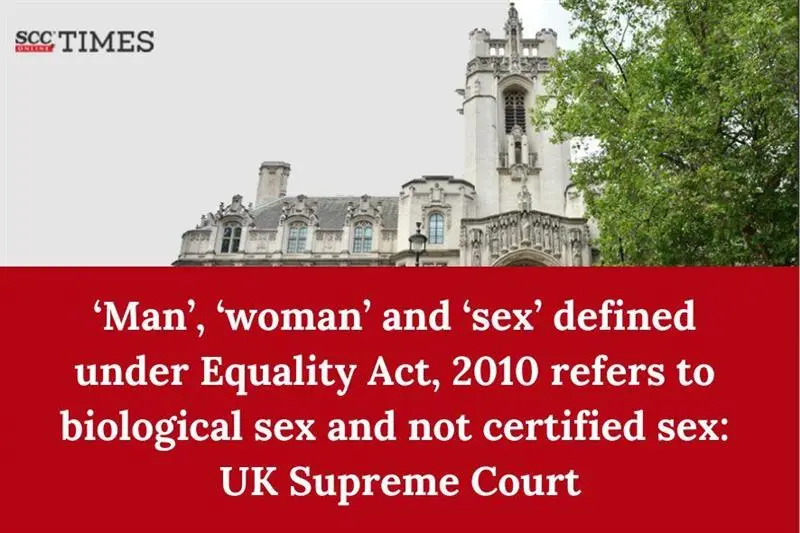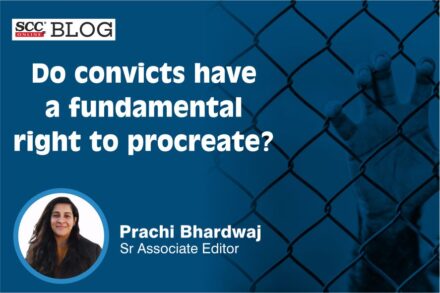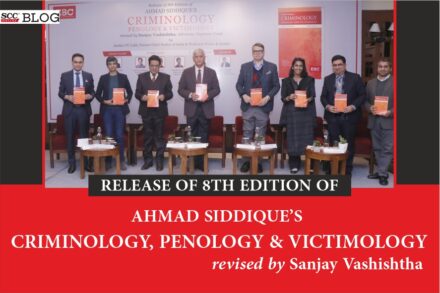Supreme Court of United Kingdom: In a significant ruling wherein the 5 Judge Bench of Lord Reed (President), Lord Hodge (Deputy President)*, Lord Lloyd-Jones, Lady Rose* and Lady Simler*, JJ., had to answer a question of statutory interpretation of the meaning of “man”, “woman” and “sex” in the Equality Act, 2010 (EA 2010); the Court unanimously held that the terms “man”, “woman” and “sex” in the EA 2010 refer to biological sex and not certified sex. Any other interpretation would render the EA 2010 incoherent and impracticable to operate.
The Court said that the interpretation of the EA 2010, does not cause disadvantage to trans people, with or without a Gender Recognition Certificate (GRC). They would be able to invoke the provisions on direct discrimination and harassment, and indirect discrimination. A certificated sex reading is not required to give them those protections.
Background and Contentions:
The instant appeal arose in response to the definition of the term “woman” in the Gender Representation on Public Boards (Scotland) Act 2018 (ASP 2018) and associated statutory guidance. This legislation created gender representation targets to increase the proportion of women on public boards in Scotland. The ASP 2018 and the original statutory guidance defined “woman” as including people: (i) with the protected characteristic of gender reassignment; (ii) living as a woman; and (iii) proposing to undergo / undergoing / who have undergone a gender reassignment process.
In 2020, the Appellant, a feminist voluntary organisation that campaigns to strengthen women’s rights in Scotland, challenged this guidance. The Inner House found that this statutory definition was unlawful as it involved an area of law reserved to the UK Parliament (equal opportunities) and therefore fell outside the legislative competence of the Scottish Parliament.
Subsequently, the Scottish Ministers issued new statutory guidance which is under challenge in this appeal. The new statutory guidance states that, under the ASP 2018, the definition of a “woman” is the same as that in the EA 2010. Section 212 of the EA 2010 defines “woman” as “a female of any age.” The new statutory guidance stated that a person with a Gender Recognition Certificate (“GRC”) recognising their gender as female is considered a woman for the purposes of the ASP 2018. A GRC is a document that allows trans people to change their gender legally. The Gender Recognition Act 2004 (“GRA 2004”) established that an adult can receive a GRC if they provide evidence that they have or have had gender dysphoria, have lived as their acquired gender for two years and intend to continue to do so until death.
In 2022, the Appellant challenged the lawfulness of the new statutory guidance. The Appellant submitted that the definition of a “woman” under the EA 2010 refers to biological sex, meaning that a trans woman with a GRC (a biological male with a GRC in the female gender) is not considered a woman under the EA 2010, and consequently the ASP 2018. The Respondent submitted that the definition of a “woman” under the EA 2010 refers to “certificated sex”, meaning that it includes trans women with a GRC.
Court’s Assessment:
Perusing the issue, the Court admitted that the questions raised by the instant appeal directly affect women and members of the trans community. “On the one hand, women have historically suffered from discrimination in our society and since 1975 have been given statutory protection against discrimination on the ground of sex. On the other hand, the trans community is both historically and currently a vulnerable community which Parliament has more recently sought to protect by statutory provision”.
Explaining that the Court’s approach in the instant case is limited to statutory interpretation of the term’s ‘man’, ‘woman’, ‘male’ and ‘female’ in the EA 2010. The Court said that general approach of focussing on the words which Parliament has used in a provision is justified by the principle that those are the words which Parliament has chosen to express the purpose of the legislation and by the expertise which the drafters of legislation bring to their task. However, where there is sufficient doubt about the specific meaning of the words used which the court must resolve, the indicators of the legislature’s purpose outside the provision in question, including the external aids. “Whether Parliament intended a word to have a different meaning in different sections of an Act must be determined by looking at the context of the section in question and the Act as a whole”.
Delving into history, the Court pointed out that Protection from sex discrimination was initially recognised in the Sex Discrimination Act 1975 (“SDA 1975”). The SDA 1975 made it unlawful (i) for a woman to be treated less favourably than a man because of her sex (direct discrimination) and (ii) to apply a requirement or condition which applies equally to both sexes but where the proportion of women who can comply is smaller compared to the proportion of men (indirect discrimination). Parliament used the words “man” and “woman” throughout the SDA 1975 to distinguish between different groups on the basis of sex. The Court emphasised that there was no doubt that Parliament intended the words “man” and “woman” to refer to biological sex.
The SDA 1975 and Sex Discrimination (Gender Reassignment) Regulations 1999 were repealed and replaced by the EA 2010. The EA 2010 was enacted as an amending and consolidating statute. It enacted group-based protections against discrimination based on a range of characteristics, including sex and gender reassignment.
The Court noted that there was no indication that the EA 2010 modified the meaning of “man” and “woman” or “sex” from the meaning in the SDA 1975. Therefore, the context in which the EA 2010 was enacted was that the SDA 1975 definitions of “man” and “woman” referred to biological sex and trans people had the protected characteristic of gender reassignment. Coming onto the interpretation of EA 2010, the Court stated that a careful analysis of the provisions of the EA 2010 must be undertaken to decide whether they indicate that a biological meaning of sex is intended and/or that a certificated sex definition would render these provisions incoherent or absurd.
The Court pointed out that as a matter of ordinary language, the provisions relating to sex discrimination can only be interpreted as referring to biological sex. The Court gave certain examples, such as the provisions relating to pregnancy and maternity (Sections 13(6), 17 and 18 of the EA 2010) are based on the fact of pregnancy and giving birth to a child. As a matter of biology, only biological women can become pregnant. Therefore, these provisions are unworkable unless “man” and “woman” have a biological meaning.
The Court said that interpreting “sex” as certificated sex would cut across the definitions of “man” and “woman” and thus the protected characteristic of sex in an incoherent way. References to a “woman” and “women” as a group sharing the protected characteristic of sex would include all females of any age (irrespective of any other protected characteristic) and those trans women (biological men) who have the protected characteristic of gender reassignment and a GRC (and who are therefore female as a matter of law). The same references would necessarily exclude men of any age, but they would also exclude some (biological) women living in the male gender with a GRC (trans men who are legally male). The converse position would apply to references to “man” and “men” as a group sharing the same protected characteristic. “We can identify no good reason why the legislature should have intended that sex-based rights and protections under the EA 2010 should apply to these complex, heterogenous groupings, rather than to the distinct group of (biological) women and girls (or men and boys) with their shared biology leading to shared disadvantage and discrimination faced by them as a distinct group”.
The Court emphasised that it is important that the EA 2010 is interpreted in a clear and consistent way so that groups which share a protected characteristic can be identified by those that the EA 2010 imposes obligations on so that they can perform those obligations in a practical way.
The Court explained that a certificated sex interpretation would also create two sub-groups within those who share the protected characteristic of gender reassignment, giving trans people who possess a GRC greater rights than those who do not. Those seeking to perform their obligations under the EA 2010 would have no obvious means of distinguishing between the two sub-groups, particularly since they could not ask whether someone had obtained a GRC as that information is private. The Court further explained that a certificated sex interpretation would also weaken the protections given to those with the protected characteristic of sexual orientation for example by interfering with their ability to have lesbian-only spaces and associations.
The Court pointed out that the practical problems which arise under a certificated sex approach are clear indicators that this interpretation is not correct. The meaning of “sex” and “woman” must be consistent throughout the EA 2010. The Court concluded that the meaning of the terms “sex”, “man” and “woman” in the EA 2010 refer to biological sex, as any other interpretation would render the EA 2010 incoherent and impracticable to operate. Therefore, a person with a GRC in the female gender does not come within the definition of a “woman” under the EA 2010 and the statutory guidance issued by the Scottish Ministers is incorrect.
It was however clarified that the interpretation of the EA 2010 rendered by the Court does not remove protection from trans people, with or without a GRC. Trans people are protected from discrimination on the ground of gender reassignment and are also able to invoke the provisions on direct discrimination and harassment, and indirect discrimination on the basis of sex. A trans woman can claim sex discrimination because she is perceived to be a woman. A certificated sex reading is not required to give this protection.
[For Women Scotland Ltd v. The Scottish Ministers, [2025] UKSC 16, decided on 16-4-2025]
*Judgment by Lord Hodge, Lady Rose and Lady Simler (with whom Lord Reed and Lord Lloyd-Jones agreed)






